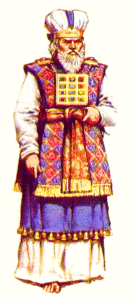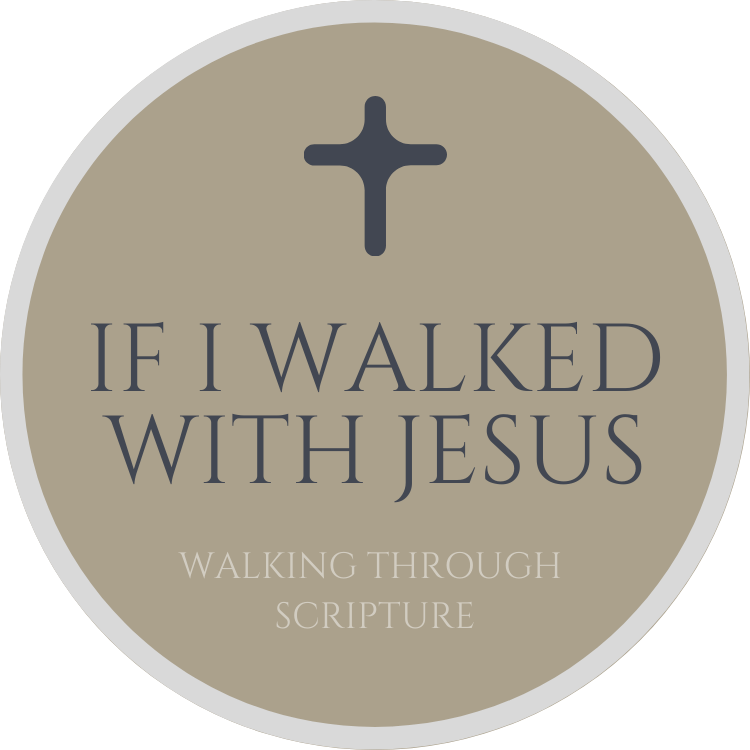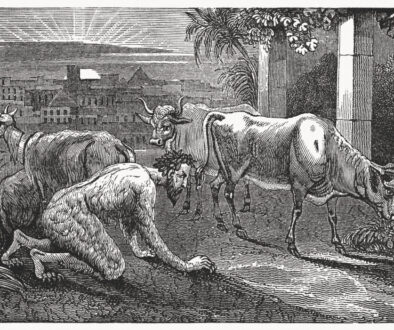Exodus 28:1-43 Priestly Robes

God moves His focus to the attire of those serving in the temple. He also focuses on who is to serve.
I’m curious here why God skips around with His instructions to Moses. If I were organizing this instruction pamphlet I would be methodical. I would start with the tent, move on to ALL of its furnishings, move to the courtyard, its furnishings, then move to the people and everything connected with them. On our journey with the God and Moses we are still missing an item from both the tent and courtyard at this point. So why did God turn His attention to the priests at this point? Maybe He was keeping the “weaving” projects connected. The bronze altar doesn’t follow this line of instructions though, so maybe this wasn’t His agenda.
This will probably be another bench question when I get to Heaven. But since God shifted focus, we will follow along.
God first dictates WHO will serve as His priests. Aaron and his sons are called. God specifically calls Aaron, Nadab, Abihu, Eleazar and Ithamar. Aaron was to be the high priest and his sons would serve under him.
Aaron filled the role for Moses as his priest when speaking to Pharaoh. God told Moses that Aaron would represent this role. This was a natural move from serving one step removed into direct service. Aaron was from the tribe of Levi and this is the group that God would call to be perpetual servants in His house, but it came from Aaron forward in the beginning. I will have to google if the priesthood went back to all of Levi’s line or if it stayed with Aaron’s. (I was going to wait until later to do this but couldn’t move on until I did. I found out little on this topic. Aaron passed the priesthood on to his son but beyond that, I have no available research from Google.)
God wanted to set Aaron apart from the regular populace. He needed to stand out and stand up. He accomplished this with the priestly garments. Aaron dressed completely different from any other member of the congregation. I don’t know if Aaron would go about wearing his robes all day or only when ministering in the temple. We may find that answer later on in our continued study. But his manner of dress was also a “stand-up” representation for all the Israelites. The garments Aaron would wear, that God designed, would do more than show him as “the man.” It would speak of his authority and responsibility. It bore the names of ALL the tribes of Judah. The stones on his shoulders and the stones in the breastplate bore the names of the tribes before the Lord. I’m guessing here that the tribes of Ephraim and Manasseh were represented under the tribe of Joseph. This kept the count of tribes to 12, including Levi’s tribe.
There are SO MANY renditions of what Aaron’s clothing looked like. I found it impossible to choose a single best option. I know a few of the things I should see but God’s description does not give me a clear picture to go by. I like the “checkered” coat. What I want to know is does it go below the breastplate or over it?
When I was looking at the breastplate I noticed it was made double thick. On the lower edge the back piece was where rings to attach it were put. I wondered if that meant the front piece swung free but God also said that the breastplate should not come loose from the ephod. Is that the WHOLE breastplate or the back edges? Also where exactly where the Urim and Thummim put?
Speaking of Urim and Thummim, I wanted to know what they were. I knew that the stones of the breastplate were precious stones chosen to represent each of the twelve tribes. I wonder if they were their birthstones or what significance they held for each tribe. I figure the Gems of the Bible site could supply some of those meanings, but I didn’t go there today. Instead I looked up Urim and Thummim instead.
Those two items were used to interpret God’s will. They were used by the priest in making decisions regarding the people and God’s judgement. That is why they were part of the “breastpiece of judgement.” I am watching a Youtube teaching on them but haven’t come across anything about how they were actually used. Maybe it is still to come, but I wanted to come back to our time for now. I’ll include a link so you can watch it if you want to. For some strange reason it wants to start midway where I stopped it to come back to our time together. Move the marker to the beginning if you want to watch the whole video. I’ve tried fixing it but nothing is working.
God’s description of the robe of the ephod reminds me of making doll clothes when I was younger. We would cut out a square piece of fabric that was folded in half for the dress. A neck hole was cut in the center of the folded side and then sleeves were made by cutting triangular pieces on both sides from the lower edge up towards the fold. Stitch up both layers from bottom to inner sleeve to outer edge of sleeve and “voila” you have a doll dress, kind of. God had them put a band around the opening for the head to reinforce it and I don’t know if His had sleeves or was even sewn together on the sides.
What we do know was that this simple garment bore some extra decorations that were very important. The hem had bells and pomegranates on it. I don’t know if the pomegranate was a fringe type decoration or an embroidered one but the bells were real enough to make a sound. This sound was what confirmed to those waiting outside the Holy of Holies that the one ministering to the Lord was still alive. No bells, no life. Bells ringing, everything fine.
I was just thinking about the bells and something occurred to me. God told Moses regarding the bells “It shall be on Aaron when he ministers, and its sound shall be hard when he goes into the Holy Place before the Lord, and when he comes out, so that he does not die” (verse 35). This sound is not just for those listening outside the door but also demonstrates the one serving’s attitude. To go in without the bells would be saying you felt no fear or reverence of a righteous God. It would demonstrate arrogance in the extreme and that alone would be enough for you to deserve death. Going in without them would also be breaking one of God’s rules, sinning, and that was NOT a position you wanted to be in when you stepped into His very presence.
Earlier I asked if Aaron took off his garments when outside the temple. One thing he may have had to wear all the time was the turban with the gold piece on it. God said “it shall regularly be on his forehead” (verse 38b) but I’m not sure if this is only when presenting the people’s offerings or not.
Another article of clothing that is interesting to me is the underpants. I don’t recall this article of clothing being mentioned anywhere else in the bible. Was it only worn by the priests? I imagine the women wore something, at least during their flow but was this a common garment like it is for us today? God ordered it so that when the priests rose higher than the general public or came up to Him that they would not be exposed. That was why He said not to make altars with stairs leading to them.
Aaron’s sons only received the outer garments and the underpants. There was no ephod, robe, breastplate, or turban with a golden headpiece. They received coats, sashes and caps for their work, plus underpants of course. I wonder if they wore special robes under their coats; maybe their “Sunday best”? I certainly wouldn’t want to appear before God in my grubby clothes from the day’s work.
I’m thinking about the skilled craftsmen who created all these pieces. The engraver who was able to write small enough on stone to engrave SIX names on two different stones that were small enough to sit on Aaron’s shoulders. The weavers who could spin gold into braided cords. The designers who could take God’s verbal instructions and translate them into a finished product that God was pleased with. These men, and maybe women, were gifted by God especially for this project. I’m CERTAIN He gave them a picture of what He wanted in their hearts. But then they had to make that picture come to life. I can’t imagine that much responsibility sitting on my shoulders! Talk about needing to be a perfectionist!!!
Father God, I hope You show me a true representation of what You described here when we finally meet face to face. I don’t like not knowing. I wish I was better at visualizing these things but that’s not my talent. Did You make the directions vague on purpose so that others down the years couldn’t copy Your design? That’s one way to keep a secret. But You didn’t keep it secret from those who You chose to create these works.
You let me create is a different way. You let me paint pictures with my words. That is a gift from You too. Thank You for it. I pray I use it how You want me to. I pray my words bless others and make them think. I want them to wonder along with me because if I’m asking questions then that means I’m looking deeper into Your word and deepening our relationship. And I LOVE IT when You answer those questions through Your Holy Spirit and even when You spur even more questions. Keep me searching Your word, even if I don’t get all the answers this side of Heaven. At least I’m asking, seeking and knocking.



